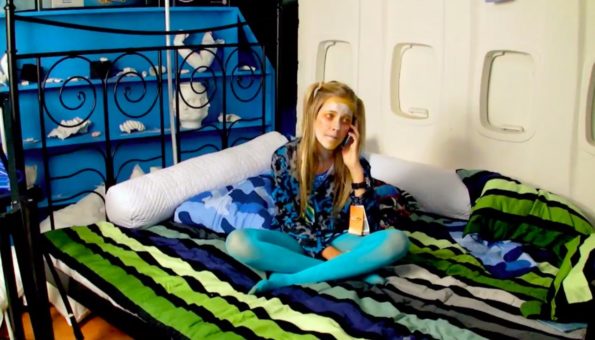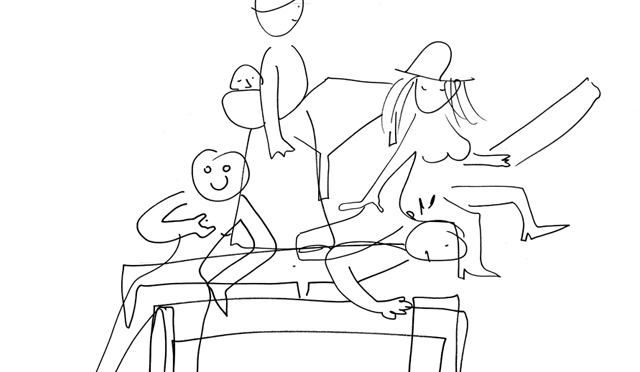Search
To search for an exact match, type the word or phrase you want in quotation marks.
A*DESK has been offering since 2002 contents about criticism and contemporary art. A*DESK has become consolidated thanks to all those who have believed in the project, all those who have followed us, debating, participating and collaborating. Many people have collaborated with A*DESK, and continue to do so. Their efforts, knowledge and belief in the project are what make it grow internationally. At A*DESK we have also generated work for over one hundred professionals in culture, from small collaborations with reviews and classes, to more prolonged and intense collaborations.
At A*DESK we believe in the need for free and universal access to culture and knowledge. We want to carry on being independent, remaining open to more ideas and opinions. If you believe in A*DESK, we need your backing to be able to continue. You can now participate in the project by supporting it. You can choose how much you want to contribute to the project.
You can decide how much you want to bring to the project.

In this edition of 2022, under the title Teen R-evolution: between meme and drama, we present a series of artistic and cultural proposals that revolve around adolescence as a time of transition, change, construction of identity, personality and position in relation to the world, and that highlight the conflict that we live day by day and that digitalization only exacerbates.
With Teen R-evolution we want to insist on the need to empathize and to put ourselves back in the shoes of our adolescent self. That transition between childhood and adulthood, that stage so irrational and intense, at the same time vulnerable and malleable, where the first disappointments are lived, the first sexual experiences, in short, a time of experimentation and metamorphosis. This is a period we have all gone through that is so complex and uncertain, in which it is easy for us to place ourselves and empathize, perhaps more than putting ourselves in the shoes of a person from another cultural reality, race or gender. In other words, it is about adolescence as a universal and global paradigm.
The need to understand the world in order to define a point of reference is related to adolescence, but also to all of us, especially today. Therefore, it is about paralleling the complexity and uncertainty of the moment we live in with that of adolescence.
Jonas Trueba, Quién lo impide [Who’s Stopping Us?] (2021)
Quién lo impide is a call to transform the perception we have of adolescence and youth; that of those who were born at the beginning of the 21st century and have just come of age; those who now seem guilty of everything while seeing their hopes diminished. Between documentary, fiction and pure testimonial record, young teenagers are shown as they are but as we rarely see them or let us see them: taking advantage of the film camera to show the best of themselves and restore our confidence in the future. Because the youth who talk to us about love, friendship, politics or education are not only talking about their own, but about what matters to us always, at any age. Quién lo impide is a film about us: about what we were, what we are and what we will continue to be.
Violeta Mayoral, Parar el tiempo [Stopping Time] (2022)
The work of listening, relaxation and how to understand the passage of time without going through analog or digital devices leads to the action Parar el tiempo at the high school for two hours. This project is the result of the program En Residència. The final action required the involvement of all ESO and high school students who agreed to get rid of their mobile devices; but also the participation of the teaching and management team. It also counted on the involvement of the maintenance manager, who was in charge of deactivating the school bells. The video conveys the enthusiasm involved in initiating the action and conveys the prize of the final calm that the students were able to enjoy after managing to “stop time”.
Stine Marie Jacobsen, Group Think (2020)
Group Think is a project that aims to expand the current formal education program in schools by imparting ideas on collective intelligence, non-violent civil protest training techniques and first aid in sports education. The project introduces a series of exercises that simulate the movements of crowds and promote awareness of the ability to act in solidarity and collectively for global justice. These exercises have been co-written and tested by Danish artist Stine Marie Jacobsen, circus artists from project partner Archaos and eighty students from the Marseille school during Manifesta 13.
Ryan Trecartin y Lizzie Fitch, The Re’Search (2010)
The Re’Search is a teen microcosm with a series of scenarios featuring young girl characters who drift in and out of the plot. On the one hand, there’s a production commissioned by Voy’s lesbian mothers – a pseudo Olsen twin with a tail. Or the show’s beautiful, tortured Sammy B, who vows to commit suicide every day by webcasting from her pink bedroom. Although her fans watch her to hate her, what they love to see her feel, that’s why the audience will never let her quit. Framed as research subjects and thus ostensibly anthropological content, the young girls in the film serve as archetypes, social structures and perfect Disney appearances. Girls played by other girls, the drama ranges from negotiations between companies and families to the exploitation of child actors by their own parents.
Robert Lippok’s concert on soundscapes of the city of the future
A series of soundscapes lead us to think of the city of the future as a modular city. An agile and flexible city for our changing times and in flux with the adolescent age. To end the event with a sonic jolt that aligns us with our teenagers.
Robert Lippok is as a musician, stage designer and visual artist based in Berlin. He studied stage design at Kunsthochschule Weißensee Berlin. In 1984, he and his brother founded the experimental music project “Ornament und Verbrechen”. Lippok’s works are dedicated to the combination of spatial sound and architecture and have been exhibited at the Neue Nationalgalerie in Berlin, the Hamburger Bahnhof, and the Haus der Kunst in Munich, among others. As a composer, he has collaborated with the artists Doug Aitken, Olaf Nicolai, and Julian Charrière, with architect Arno Brandlhuber, and with choreographer Constanza Macras for various dance theater productions. Most recently, he released the solo album “Applied Autonomy” on the raster-media label. Lippok teaches at NYU Berlin and is a member of the Institut für Raumexperimente e.V., founded by Olafur Eliasson, as well as a curator at the Spatial Sound Institute in Budapest. With his audiovisual shows and live music, he has performed at the festival MUTEK, the Unsound Festival, L.E.V. Festival, Gamma Festival, Berghain and Funkhaus Berlin, among others.
More about Robert Lippok.

A*DESK is a critical platform focused on publishing, training, experimentation, communication and dissemination in relation to contemporary culture and art, which is defined by transversality. The starting point is contemporary art, because that is where we come from and this awareness allows us to go much further, to incorporate other disciplines and forms of thought in order debate issues that are relevant and urgent for understanding our present.
"A desk is a dangerous place from which to watch the world" (John Le Carré)